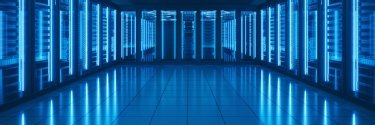Network infrastructure
Network hardware and physical appliances, such as routers, switches, gateways, hubs and bridges, serve as the vital foundation of network infrastructure. Common network protocols and more emergent network software also play major roles in any architecture. While networking has shifted to software-centric principles, see how traditional network infrastructure keeps pace.
Top Stories
-
Answer
03 Apr 2025

Application vs. network load balancing: What's the difference?
Network load balancing and application load balancing both handle traffic requests. However, they process and direct requests with different levels of speed and efficiency. Continue Reading
By- David Jacobs, The Jacobs Group
-
Tip
02 Apr 2025

How to set up a VLAN for enterprise networks
Network administrators configure VLANs to enhance network security and performance. Learn how to set up a VLAN, from configuration steps and best practices to troubleshooting tips. Continue Reading
By- Damon Garn, Cogspinner Coaction
-
News
24 Feb 2022

Dell, Marvell partner on telco 5G hardware
The combination Dell PowerEdge server and Marvell-powered inline 5G Layer 1 processing card can run carriers' open or virtualized radio access networks. Continue Reading
By- Antone Gonsalves, Editor at Large
-
Answer
23 Feb 2022

Load sharing vs. load balancing: What's the difference?
Load sharing and load balancing are two techniques that work to distribute traffic across a network. However, their methods of balancing differ significantly. Here's how. Continue Reading
By- Andrew Froehlich, West Gate Networks
-
Guest Post
07 Feb 2022

Compare smartNIC products and use cases
Not all smartNIC use cases are the same, and not all products offer the same functionality and features. Compare offerings from three of the main smartNIC market segments. Continue Reading
By- Saqib Jang
-
Definition
07 Feb 2022

Categories of twisted-pair cabling systems
A twisted-pair cabling system is a cable consisting of one or several pairs of copper wires. Continue Reading
By- Rahul Awati
- Carrie Higbie, The Siemon Company
-
News
03 Feb 2022

Cisco launches APs, switches to enhance hybrid workplaces
Cisco has launched two Wi-Fi 6E APs and four switches to update campus networks and improve hybrid workplaces. Continue Reading
By- Madelaine Millar, TechTarget
-
News
03 Feb 2022

Juniper Networks launches Secure Edge firewall as a service
Secure Edge, the as-a-service version of Juniper's SRX firewalls, is managed through the Security Director Cloud platform for SASE released last May. Continue Reading
By- Madelaine Millar, TechTarget
-
Definition
01 Feb 2022

Point-to-Point Protocol (PPP)
Point-to-Point Protocol (PPP) refers to a suite of computer communication protocols that provide a standard way to transport multiprotocol data over point-to-point links. Continue Reading
By- Andrew Froehlich, West Gate Networks
- John Burke, Nemertes Research
-
Feature
31 Jan 2022

Edge, public cloud, security drive network transformation
Networking is starting to reflect innovations in compute and public cloud. A notable change will be how network teams view networking and security as a holistic platform. Continue Reading
By- Jennifer English, Executive Editor
-
Tip
26 Jan 2022

Intro to encapsulation and decapsulation in networking
Encapsulation adds information to a packet as it travels to its destination. Decapsulation reverses the process by removing the info, so a destination device can read the original data. Continue Reading
By- David Jacobs, The Jacobs Group
-
News
25 Jan 2022

Juniper announces routers, line card using new Trio 6 ASIC
Juniper Networks has announced routers and a line card to take advantage of the more scalable, efficient Trio 6 ASIC. It also announced a higher-throughput Express 5 ASIC. Continue Reading
By- Madelaine Millar, TechTarget
-
News
21 Jan 2022

Cisco launches industrial Catalyst switch
The IE9300 uses Cisco's Cyber Vision to improve visibility and security. The latest hardware bolsters Cisco's portfolio of Catalyst hardware for industrial use. Continue Reading
By- Madelaine Millar, TechTarget
-
News
21 Jan 2022

Juniper adds SSR management features to Mist cloud
Network managers can configure, deploy and manage Juniper's Session Smart Routers through the Mist cloud, which monitors the company's SD-WAN on the SSR. Continue Reading
By- Madelaine Millar, TechTarget
-
Infographic
28 Dec 2021

Review the major networking acquisitions of 2021
When a networking vendor announces plans to acquire another company, most people take notice. Explore which vendors made moves in 2021 and what those purchases mean. Continue Reading
By- Jennifer English, Executive Editor
-
Answer
22 Dec 2021

What are the different types of network switches?
Some of the different types of network switches include managed, modular, unmanaged and stackable. Find out how different network switches dovetail and differ. Continue Reading
By- Andrew Froehlich, West Gate Networks
-
Definition
20 Dec 2021

grid computing
Grid computing is a system for connecting a large number of computer nodes into a distributed architecture that delivers the compute resources necessary to solve complex problems. Continue Reading
-
Tip
17 Dec 2021

5 trends in enterprise networking that defined 2021
In 2020, enterprises shifted to remote work due to the pandemic. The trend continued in 2021, along with four other networking trends that defined the year and will extend into 2022. Continue Reading
By- Elizabeth Thorne, TeleGeography
-
Definition
15 Dec 2021

Reverse Address Resolution Protocol (RARP)
Reverse Address Resolution Protocol (RARP) is a protocol a physical machine in a local area network (LAN) can use to request its IP address. Continue Reading
By- Andrew Froehlich, West Gate Networks
-
Feature
13 Dec 2021

Choose from 10 CDN service providers to deliver content
Learn how 10 CDN providers measure up when it comes to addressing key considerations, including primary service focus, features, PoPs, a free trial version and pricing information. Continue Reading
By- Kevin Tolly, The Tolly Group
-
Feature
09 Dec 2021

7 tips for network pros navigating the global chip shortage
With a global chip shortage raging, lead times on switches, routers, firewalls and access points have ballooned. These seven strategies can help network pros weather the crisis. Continue Reading
By- Alissa Irei, Senior Site Editor
-
Feature
09 Dec 2021

Enable automation with a network digital twin
Digital twin technology is a hot topic in IoT systems, but IT teams can also invest in digital twins to improve network visibility, plan for changes and enable automation. Continue Reading
By- Deanna Darah, Site Editor
-
Definition
07 Dec 2021

MDI/MDIX (medium-dependent interface/MDI crossover)
MDI/MDIX is a type of Ethernet port connection that uses twisted-pair cabling to link two networked devices. Continue Reading
By- Andrew Froehlich, West Gate Networks
-
Tip
03 Dec 2021

DHCP client configuration for Linux, Windows and macOS
Network and system admins can use command-line and GUI tools to configure DHCP clients in Linux, Windows and macOS. Here's a breakdown of which commands to use for each OS. Continue Reading
By- Damon Garn, Cogspinner Coaction
-
Feature
03 Dec 2021

Evaluate must-have CDN features before choosing a product
No two CDN services are identical. Explore the main feature and function areas available in today's content delivery network market to better narrow down your choice of vendors. Continue Reading
By- Kevin Tolly, The Tolly Group
-
Tip
29 Nov 2021

Cable management software enhances documentation, visibility
Even a timeworn networking discipline like cabling can undergo a renaissance. See how cable management software helps organizations visualize network connectivity. Continue Reading
By- David Jacobs, The Jacobs Group
-
News
19 Nov 2021

Supply chain issues mean backlog, price increases for Cisco
Cisco product orders were up 33% in its most recent fiscal quarter. Supply chain issues, rising prices and historic backlog could threaten that growth's longevity. Continue Reading
By- Madelaine Millar, TechTarget
-
News
19 Nov 2021

U.S. infrastructure bill aims to close the digital divide
The U.S. infrastructure bill intends to close the digital divide with $65 billion in new spending. But it may still leave the U.S. behind China and Europe in high-speed internet access. Continue Reading
By- Makenzie Holland, Senior News Writer
-
Feature
18 Nov 2021

4 trends spurring the evolution of network hardware
Major trends in network hardware highlight enterprise interest in vendor-agnostic options and open models. But legacy designs could stand in the way of adoption. Continue Reading
By- Jennifer English, Executive Editor
-
Feature
18 Nov 2021

University's private cellular network hints to enterprise use
California State University, Stanislaus blanketed its campus in private 4G/5G in a project that shows promise for the future of CBRS networks in the enterprise. Continue Reading
By- Andrew Froehlich, West Gate Networks
-
Definition
16 Nov 2021

patch panel
A patch panel in a local area network (LAN) is a mounted hardware assembly that contains ports that are used to connect and manage incoming and outgoing LAN cables. Continue Reading
By- Andrew Froehlich, West Gate Networks
- Margaret Rouse
- Kate Gerwig, Editorial Director
-
Answer
16 Nov 2021

Does Wi-Fi 6 have better range than previous wireless standards?
Yes, Wi-Fi 6 provides better wireless range. But it's not because of higher power output. The key is certain Wi-Fi 6 features can improve data rates at a given range. Continue Reading
By -
Feature
16 Nov 2021

Ford, Mercedes-Benz optimize 5G-enabled smart factories
Smart factories are typically powered by technologies like AI or IoT systems. Now, companies like Ford, John Deere and Mercedes-Benz are using 5G to innovate smart factories. Continue Reading
By- Deanna Darah, Site Editor
-
Definition
11 Nov 2021

chatty protocol
A chatty protocol is an application or routing protocol requiring a client or server to wait for an acknowledgment before transmitting data again. Continue Reading
By -
Tip
11 Nov 2021

4 ideas for network cable management best practices
When organizing cable clutter, network engineers should follow some common best practices, including the use of cable labels, cable ties and proper documentation. Continue Reading
By- John Burke, Nemertes Research
- Chris Partsenidis, Firewall.cx
-
Feature
10 Nov 2021

What are the top CDN benefits for today's enterprise?
Delivering timely, high-quality content is more critical than ever, and CDN services bring that and a myriad of other benefits to the modern enterprise. Continue Reading
By- Kevin Tolly, The Tolly Group
-
Answer
10 Nov 2021

Fog computing vs. edge computing: What's the difference?
Fog computing vs. edge computing -- while many IT professionals use the terms synonymously, others make subtle but important distinctions between them. Continue Reading
By- Stephen J. Bigelow, Senior Technology Editor
- Alissa Irei, Senior Site Editor
-
Definition
09 Nov 2021

downloading
Downloading is the transmission of a file or data from one computer to another over a network, usually from a larger server to a user device. Continue Reading
By -
Definition
05 Nov 2021

IDSL
IDSL is a hybrid of a digital subscriber line (DSL) and integrated services digital network (ISDN) technology that transmits data slightly faster than ISDN but much slower than most DSL services. Continue Reading
By -
News
04 Nov 2021

Aruba launches more powerful Instant On switches
Aruba is launching the 1960 series, the latest addition to its small business-optimized Instant On portfolio. The new switch offers more bandwidth and scalability. Continue Reading
By- Madelaine Millar, TechTarget
-
Answer
04 Nov 2021

What are the 6 components of structured cabling?
The six components of structured cabling are Entrance Facilities, Equipment Room, Backbone Cabling, Telecommunications Room, Horizontal Cabling and Work Area. Continue Reading
By -
Feature
02 Nov 2021

FedEx, S&P Global discuss cloud edge use cases
A cloud edge strategy moves resources and data closer to where users need them, supporting use cases like robotics, IoT and autonomous processing. Continue Reading
By- Jennifer English, Executive Editor
-
Definition
01 Nov 2021

ARPANET
The U.S. Advanced Research Projects Agency Network (ARPANET) was the first public packet-switched computer network. Continue Reading
By -
Tip
29 Oct 2021

Get up to speed with enhanced content delivery networks
With enhanced features and new delivery options, CDNs are poised to make greater inroads with enterprises to improve UX across the board. Continue Reading
By- Kevin Tolly, The Tolly Group
-
News
28 Oct 2021

Cisco's newest Silicon One chip steps up routing performance
The P100 ASIC delivers a high performance-to-power ratio for web-scale data centers. It's the 11th chip in the Silicon One family. Continue Reading
By- Madelaine Millar, TechTarget
-
Definition
25 Oct 2021

HELLO packet
A HELLO packet is a special data packet (message) that is sent out periodically from a router to establish and confirm network adjacency relationships to other routers in the Open Shortest Path First (OSPF) communications protocol. Continue Reading
By -
Answer
25 Oct 2021

Network redundancy vs. resiliency: What's the difference?
The difference between network redundancy and resiliency is redundancy duplicates network devices while resiliency is the self-recovery of system failures. Continue Reading
By- Andrew Froehlich, West Gate Networks
-
News
22 Oct 2021

Gartner predicts IT spending to reach $4.5 trillion in 2022
Corporate boards will prioritize their digital tech initiatives, as fully remote work gives way to a thoughtful hybrid work model that places IT at the core of business operations. Continue Reading
By- Madelaine Millar, TechTarget
-
Tip
22 Oct 2021

A quick guide to BGP best practices
The use of Border Gateway Protocol is prevalent among ISPs and enterprises. While BGP best practices change for specific use cases, some recommendations are helpful in all scenarios. Continue Reading
By- Terry Slattery, NetCraftsmen
-
Definition
21 Oct 2021

full-duplex
Full-duplex data transmission means that data can be transmitted in both directions on a signal carrier at the same time. Continue Reading
By- Peter Loshin, Former Senior Technology Editor
-
Definition
21 Oct 2021

route summarization (route aggregation)
Route summarization -- also known as route aggregation -- is a method to minimize the number of routing tables in an Internet Protocol (IP) network. Continue Reading
By -
Tutorial
21 Oct 2021

What are the different types of network cables?
The main types of network cables are coax, fiber optics, and shielded and unshielded twisted pair. As enterprises deploy new technologies, it's critical to select the right cables. Continue Reading
By- Chris Partsenidis, Firewall.cx
- David Jacobs, The Jacobs Group
-
News
20 Oct 2021

Aruba introduces the distributed data center switch
Aruba's CX distributed switch, available in January, provides security through the embedded Pensando ASICs. Services powered by the chips include load balancing and a firewall. Continue Reading
By- Madelaine Millar, TechTarget
-
Definition
18 Oct 2021

Variable Length Subnet Mask (VLSM)
Variable Length Subnet Mask (VLSM) is a subnet -- a segmented piece of a larger network -- design strategy where all subnet masks can have varying sizes. Continue Reading
By -
Definition
18 Oct 2021

Seebeck effect
The Seebeck effect is a phenomenon in which a temperature difference between two dissimilar electrical conductors or semiconductors produces a voltage difference between the two substances. Continue Reading
By -
Definition
15 Oct 2021

delay-tolerant network (DTN)
A delay-tolerant network (DTN) is a network that's designed to operate effectively in extreme conditions and over very large distances, such as with space communications. Continue Reading
By -
Tip
15 Oct 2021

Static IP vs. dynamic IP addresses: What's the difference?
Static IP addresses are typically used for servers, routers and switches. Dynamic IP addresses, however, are commonly used for workstations, phones and tablets. Continue Reading
By- Damon Garn, Cogspinner Coaction
-
Definition
13 Oct 2021

NBMA (non-broadcast multiple access)
Non-broadcast multiple access (NBMA) is one of four network types in the Open Shortest Path First (OSPF) communications protocol. Continue Reading
By -
Definition
12 Oct 2021

CSMA/CA (Carrier Sense Multiple Access/Collision Avoidance)
CSMA/CA (Carrier Sense Multiple Access/Collision Avoidance) is a protocol for carrier transmission in 802.11 networks. Continue Reading
-
Definition
12 Oct 2021

fixed-length subnet mask (FLSM)
A fixed-length subnet mask (FLSM) refers to a type of enterprise or provider networking where a block of IP addresses is divided into multiple subnets of equal length (i.e., an equal number of IP addresses). Continue Reading
By -
Definition
11 Oct 2021

virtual network adapter
A virtual network adapter is software that operates like a physical network adapter within the host operating system (OS) or through an application installed on the endpoint or server. Continue Reading
By- Andrew Froehlich, West Gate Networks
-
Definition
08 Oct 2021

flow routing
Flow routing is a network routing technology that takes variations in the flow of data into account to increase routing efficiency. Continue Reading
By -
Definition
07 Oct 2021

GMPLS (Generalized Multiprotocol Label Switching or Multiprotocol Lambda Switching)
GMPLS (Generalized Multiprotocol Label Switching) is a networking technology that enables fast and reliable network switching of data flows on any type of network infrastructure. Continue Reading
By -
Definition
06 Oct 2021

integration server
An integration server is a type of computer server that facilitates the interaction between different operating systems (OSes), services and applications across an enterprise IT environment. Continue Reading
By -
Definition
06 Oct 2021

computer hardware
Computer hardware is a collective term used to describe any of the physical components of an analog or digital computer. Continue Reading
-
Definition
05 Oct 2021

Layer Two Tunneling Protocol (L2TP)
Layer Two Tunneling Protocol (L2TP) is an extension of the Point-to-Point Tunneling Protocol (PPTP) used by an internet service provider (ISP) to enable the operation of a virtual private network (VPN) over the internet. Continue Reading
By -
Definition
04 Oct 2021

Class of Service (CoS)
Class of Service (CoS) is a way of managing traffic in a network by grouping similar types of traffic -- such as email, streaming video, voice over IP and large document file transfer -- together and treating each type as a class with its own level of network service priority. Continue Reading
By- Andrew Froehlich, West Gate Networks
-
Definition
01 Oct 2021

10BASE-T
10BASE-T is an Ethernet standard for local area networks and one of several physical media specified in the Institute of Electrical and Electronics Engineers (IEEE) 802.3 standard. Continue Reading
By -
Definition
01 Oct 2021

frequency-shift keying (FSK)
Frequency-shift keying (FSK) is a method of transmitting digital signals using discrete signals. Continue Reading
By- Andrew Froehlich, West Gate Networks
-
Definition
01 Oct 2021

subcarrier
A subcarrier is a secondary modulated signal frequency modulated into the main frequency (the carrier) to provide an additional channel of transmission. Continue Reading
By -
News
30 Sep 2021

FCC commissioner urges more funding for satellite broadband
FCC Commissioner Nathan Simington said satellite-based wireless broadband should be available in remote areas where fiber isn't an option. Continue Reading
-
Definition
30 Sep 2021

internet metering
Internet metering is a service model in which an internet service provider (ISP) keeps track of bandwidth use and charges users accordingly. Continue Reading
By -
Definition
28 Sep 2021

bottleneck
A bottleneck, in a communications context, is a point in the enterprise where the flow of data is impaired or stopped entirely. Continue Reading
By- Andrew Froehlich, West Gate Networks
- Stephen J. Bigelow, Senior Technology Editor
-
Answer
28 Sep 2021

CDN vs. cloud computing: What's the difference?
Content delivery networks and cloud computing architectures may appear to serve the same function. But each has a specific role to play when distributing content. Continue Reading
By- Andrew Froehlich, West Gate Networks
-
Definition
23 Sep 2021

circuit switching
Circuit switching is a type of network configuration in which a physical path is obtained and dedicated to a single connection between two endpoints in the network for the duration of a dedicated connection. Continue Reading
By- Ben Lutkevich, Site Editor
-
Definition
22 Sep 2021

frame relay
Frame relay is a packet-switching telecommunications service designed for cost-efficient data transmission for intermittent traffic between local area networks (LANs) and between endpoints in wide area networks (WANs). Continue Reading
By- Ben Lutkevich, Site Editor
-
Feature
22 Sep 2021

Ways to speed up white box networking adoption
Most organizations are slow to deploy new techniques, white box networking included. Experts explain why and offer advice on how to speed up adoption across enterprises. Continue Reading
By- Deanna Darah, Site Editor
-
Definition
22 Sep 2021

100 Gigabit Ethernet (100 GbE)
100 Gigabit Ethernet (100 GbE) is an Ethernet standard that supports data speeds of up to 100 billion bits (gigabits) per second (Gbps). Continue Reading
By -
Definition
22 Sep 2021

Next Hop Resolution Protocol (NHRP)
Next Hop Resolution Protocol (NHRP) is an automated configuration technology that routes data on a distributed network by discovering the best routing path between endpoints. Continue Reading
By -
Definition
22 Sep 2021

What is an edge router?
An edge router is a specialized router located at a network boundary that enables an internal network to connect to external networks. Continue Reading
By- Ben Lutkevich, Site Editor
-
Definition
17 Sep 2021

Joint Academic Network (JANET)
The Joint Academic Network (JANET) is an internal, high-speed computer network that links the U.K. education and research community. Continue Reading
-
Definition
17 Sep 2021

visitor-based networking (visitor-based network)
Visitor-based networking (VBN) is a computer network with high-speed internet access provided by an organization for temporary use by visitors, guests or other users in a public area. Continue Reading
By -
Definition
14 Sep 2021

Service Profile Identifier (SPID)
In telecommunications, a Service Profile Identifier (SPID) is a number assigned by a phone company to a terminal on an Integrated Services Digital Network (ISDN) B-channel. Continue Reading
By -
Feature
10 Sep 2021

The role of smartNICs in modern enterprise networks
This chapter excerpt from 'Building a Future-Proof Cloud Infrastructure' looks at how smartNICs can support distributed services platforms for both cloud providers and enterprises. Continue Reading
By- Jennifer English, Executive Editor
- Pearson Education
-
Feature
10 Sep 2021

How smartNIC architecture supports scalable infrastructure
In this Q&A, author Silvano Gai discusses how smartNICs can benefit enterprises by providing more granular telemetry and supporting distributed cloud infrastructure. Continue Reading
By- Jennifer English, Executive Editor
-
Definition
10 Sep 2021

GVRP (GARP VLAN Registration Protocol or Generic VLAN Registration Protocol)
GVRP (GARP VLAN Registration Protocol or Generic VLAN Registration Protocol) is a standards-based protocol that facilitates control of virtual local area networks (VLANs) within a larger network. Continue Reading
By- Andrew Froehlich, West Gate Networks
-
Definition
09 Sep 2021

Gigabit Ethernet (GbE)
Gigabit Ethernet (GbE), a transmission technology based on the Ethernet frame format and protocol used in local area networks (LANs), provides a data rate of 1 billion bits per second, or 1 gigabit (Gb). Continue Reading
By- Alexander S. Gillis, Technical Writer and Editor
-
Definition
07 Sep 2021

trunk (trunking)
A network trunk is a communications line or link designed to carry multiple signals simultaneously to provide network access between two points. Continue Reading
By- Garry Kranz
- John Burke, Nemertes Research
-
Definition
07 Sep 2021

serial digital interface (SDI)
Serial digital interface (SDI) is a standard for digital video and audio transmission over coaxial or fiber optic cabling. Continue Reading
By- Andrew Froehlich, West Gate Networks
-
Definition
02 Sep 2021

Point-to-Point Protocol over Ethernet (PPPoE)
Point-to-Point Protocol over Ethernet (PPPoE) is a network protocol that facilitates communication between network endpoints. Continue Reading
-
Definition
31 Aug 2021

1000BASE-T (Gigabit Ethernet)
1000BASE-T is Gigabit Ethernet -- 1 gigabit is 1,000 megabits per second (Mbps) on copper cables, using four pairs of Category 5 (Cat5) unshielded twisted pair (UTP) to achieve the gigabit data rate. Continue Reading
By -
Definition
27 Aug 2021

customer proprietary network information (CPNI)
Customer proprietary network information (CPNI) in the United States is information that telecommunications services -- such as local, long-distance and wireless telephone companies -- acquire about their subscribers. Continue Reading
By -
Definition
27 Aug 2021

dynamic port numbers
Dynamic port numbers, also known as private port numbers, are the port numbers that are available for use by any application to use in communicating with any other application, using the internet's Transmission Control Protocol (TCP) or User Datagram Protocol (UDP). Continue Reading
-
Definition
26 Aug 2021

domain name system (DNS)
The domain name system (DNS) is a naming database in which internet domain names are located and translated into Internet Protocol (IP) addresses. Continue Reading
By- Ben Lutkevich, Site Editor
- John Burke, Nemertes Research
-
Definition
26 Aug 2021

Real-time Transport Protocol (RTP)
Real-time Transport Protocol (RTP) is a network standard designed for transmitting audio or video data that is optimized for consistent delivery of live data. Continue Reading
By -
Definition
25 Aug 2021

NACK (NAK, negative acknowledgment, not acknowledged)
NACK, or NAK, an abbreviation for negative acknowledgment or not acknowledged, is a signal used by computers or other devices to indicate that data transmitted over a network was received with errors or was otherwise unreadable. Continue Reading
By- Katie Terrell Hanna
- Peter Loshin, Former Senior Technology Editor
-
Definition
25 Aug 2021

Synchronous Data Link Control (SDLC)
Synchronous Data Link Control (SDLC) is a transmission protocol used to synchronously transfer code-transparent, serial-by-bit data over a communications channel. Continue Reading
By -
Definition
24 Aug 2021

signal-to-noise ratio (S/N or SNR)
In analog and digital communications, a signal-to-noise ratio, often written S/N or SNR, is a measure of the strength of the desired signal relative to background noise (undesired signal). Continue Reading
By- Robert Sheldon
- John Burke, Nemertes Research
-
Definition
23 Aug 2021

Synchronous Digital Hierarchy (SDH)
Synchronous Digital Hierarchy (SDH) is a group of fiber optic transmission rates that transport digital signals with different capacities. Continue Reading
By -
Feature
23 Aug 2021

Explore virtualization study topics for CCNP, CCIE exams
Aspiring CCNPs and CCIEs will need to grasp one of networking's most important topics: virtualization. 'Day 7' from Patrick Gargano's '31 Days' explains the subject in detail. Continue Reading
By- Deanna Darah, Site Editor
- Pearson Education
-
Feature
23 Aug 2021

Virtualization concepts to study for CCNP and CCIE exams
In this Q&A, author Patrick Gargano discusses the importance of virtualization in networking and offers studying advice for aspiring CCNPs and CCIEs in preparation for the exams. Continue Reading
By- Deanna Darah, Site Editor
-
Definition
20 Aug 2021

bit stuffing
Bit stuffing refers to the insertion of one or more bits into a data transmission as a way to provide signaling information to a receiver. Continue Reading